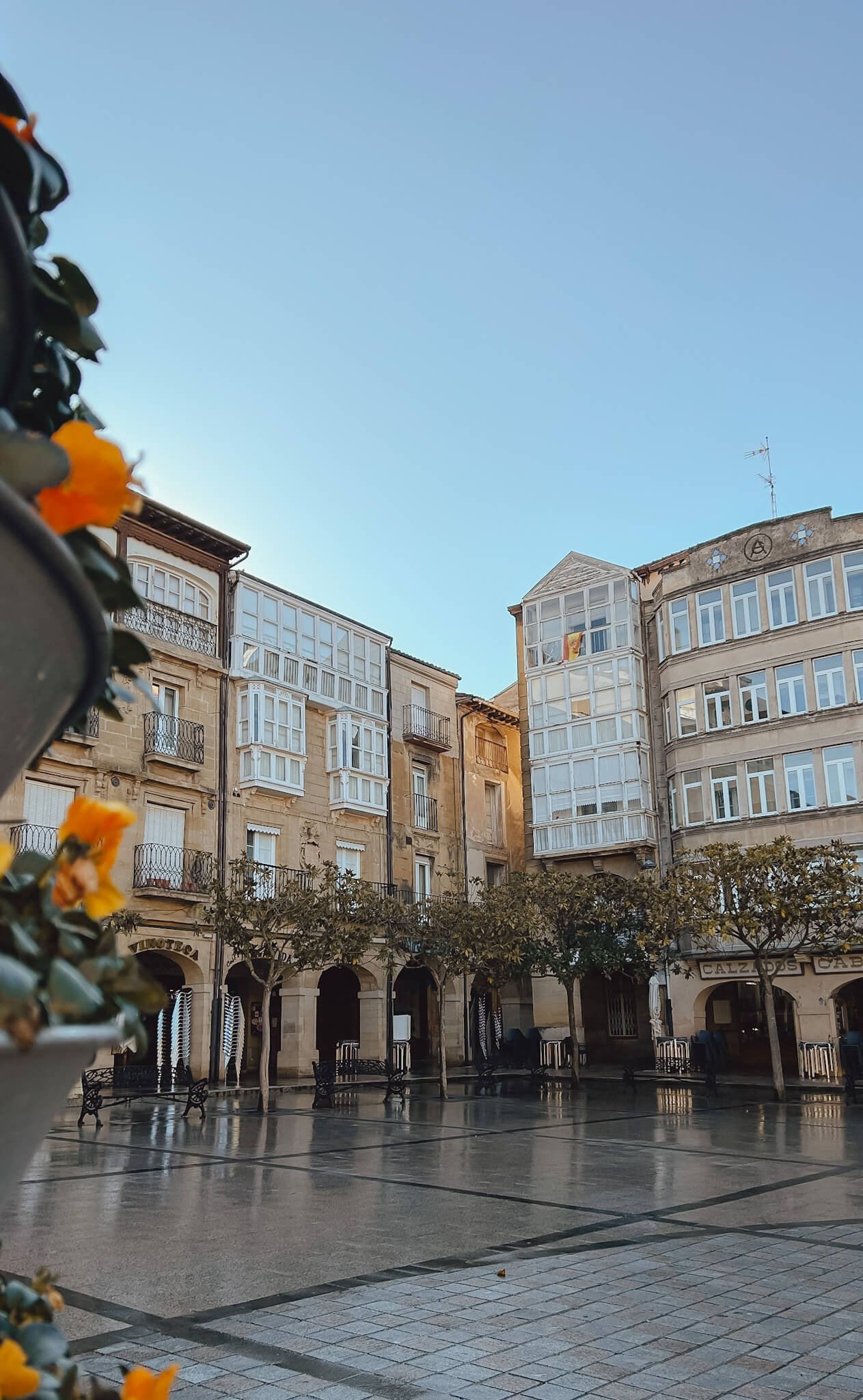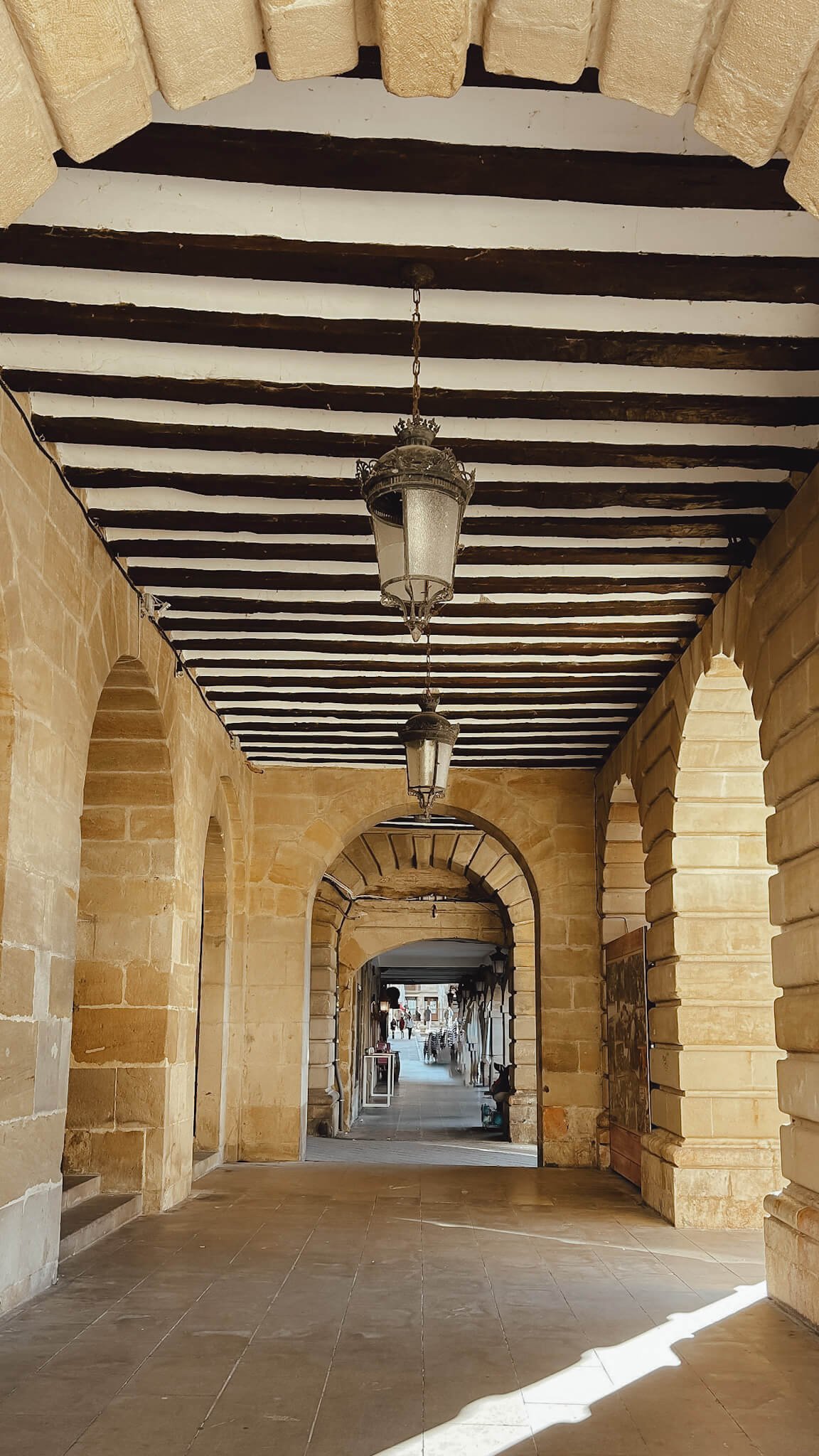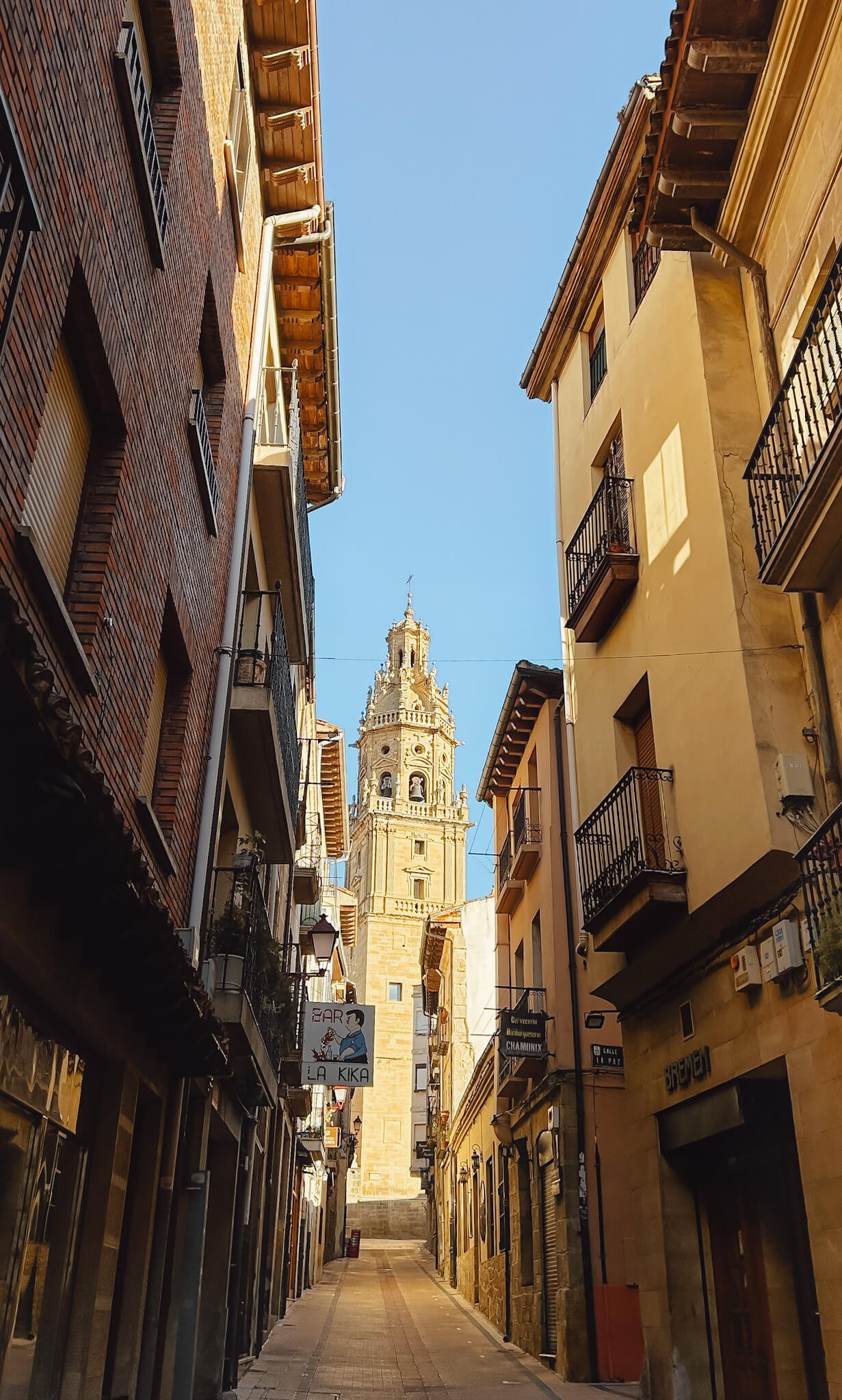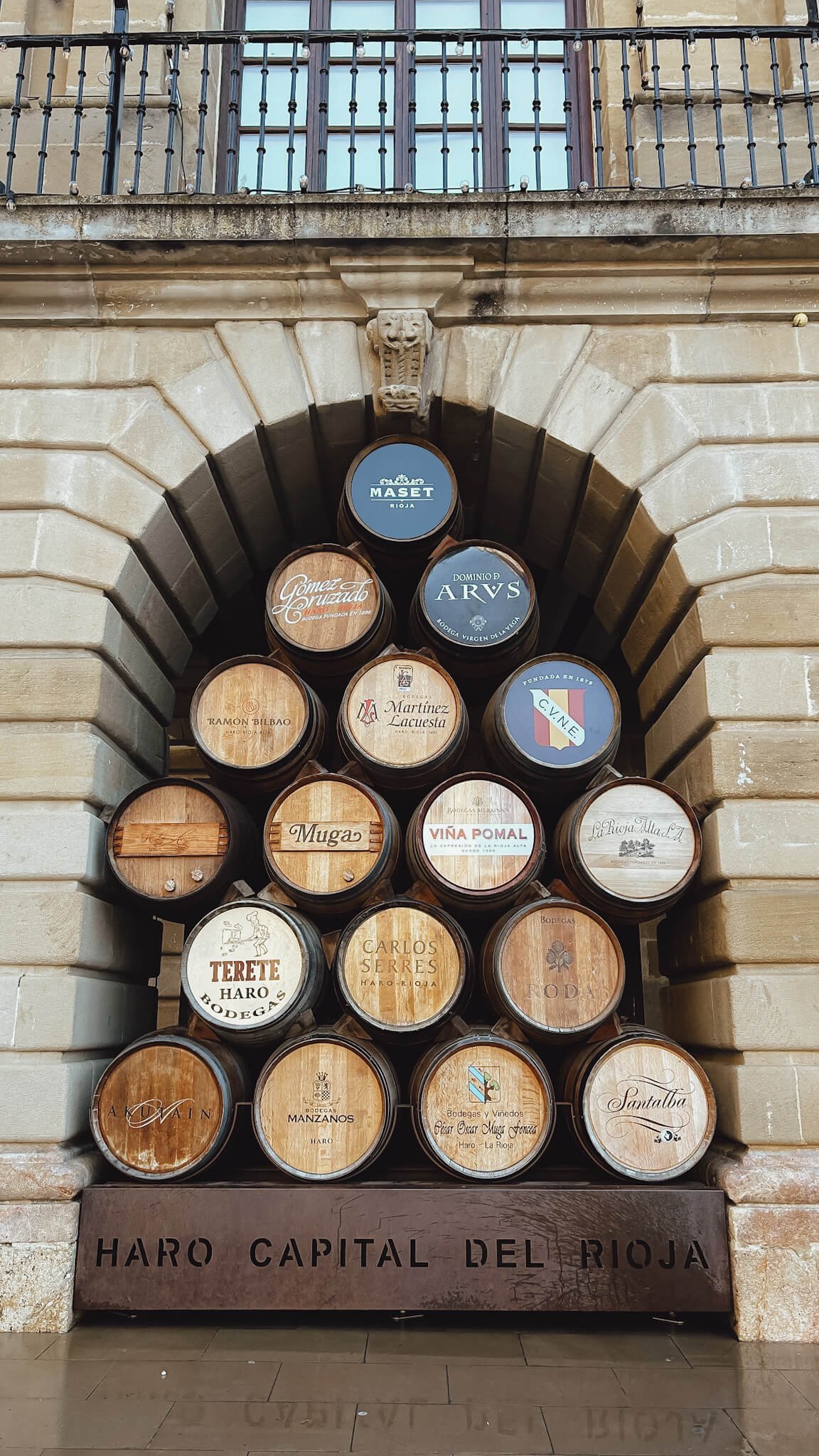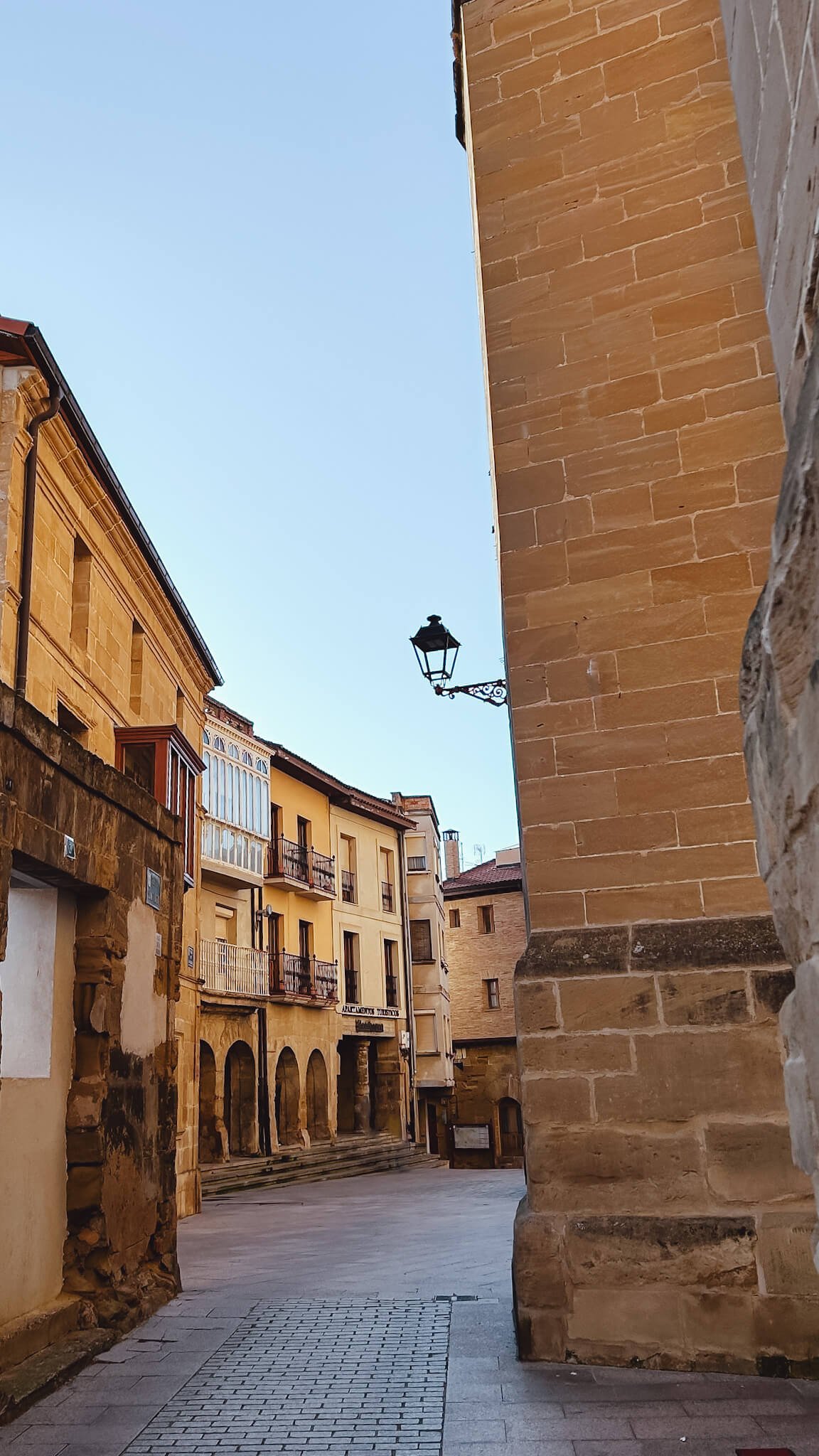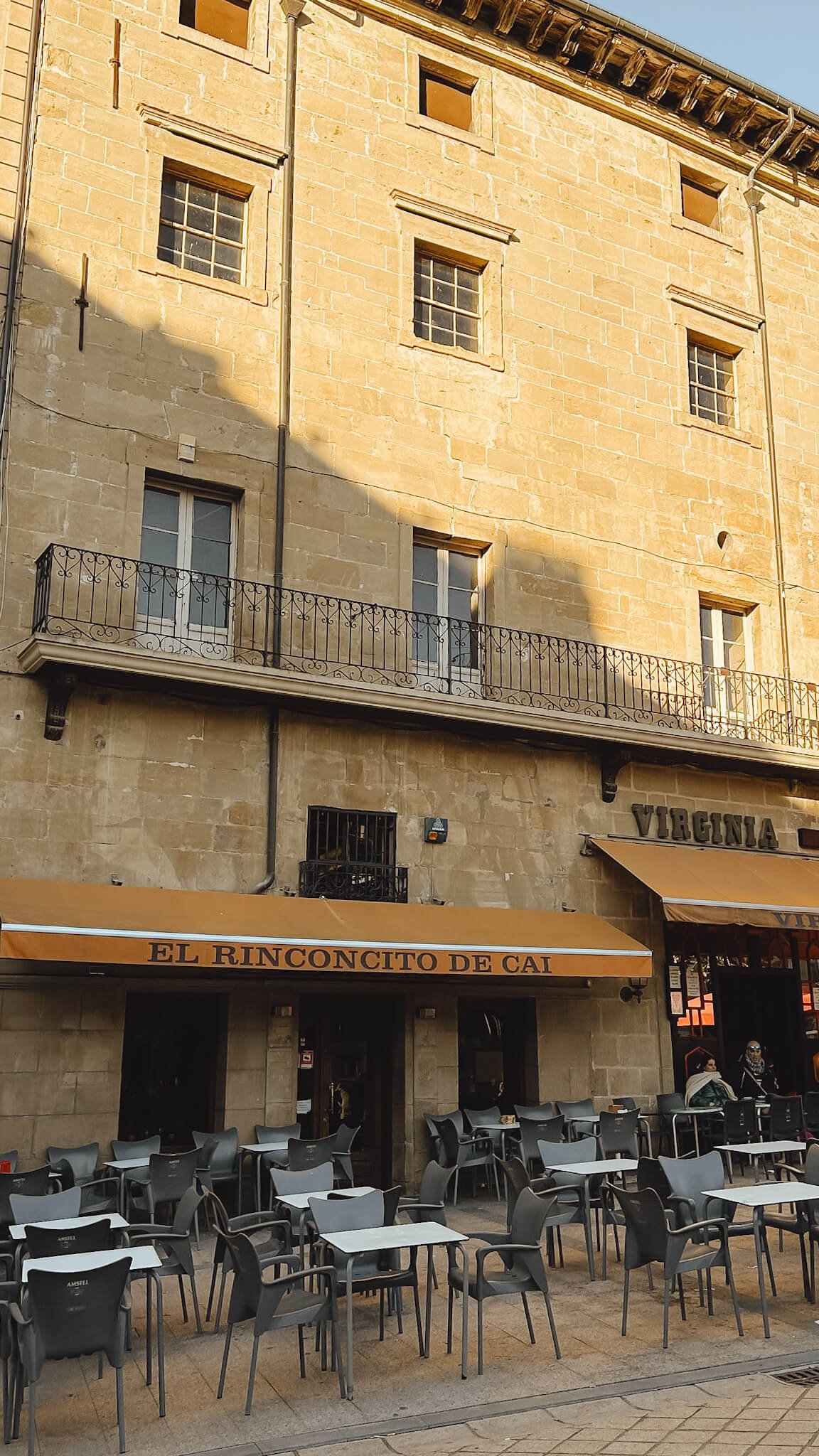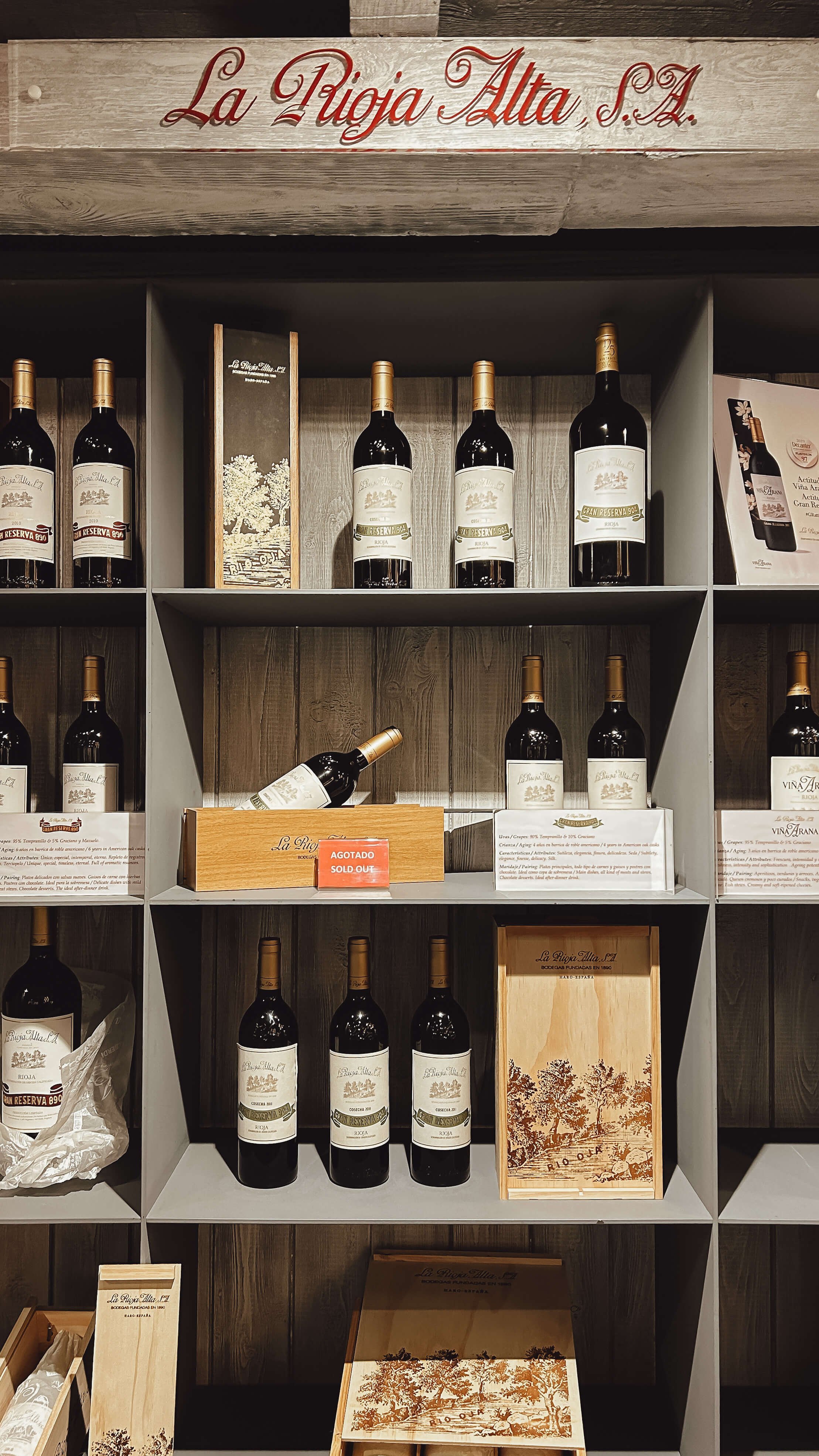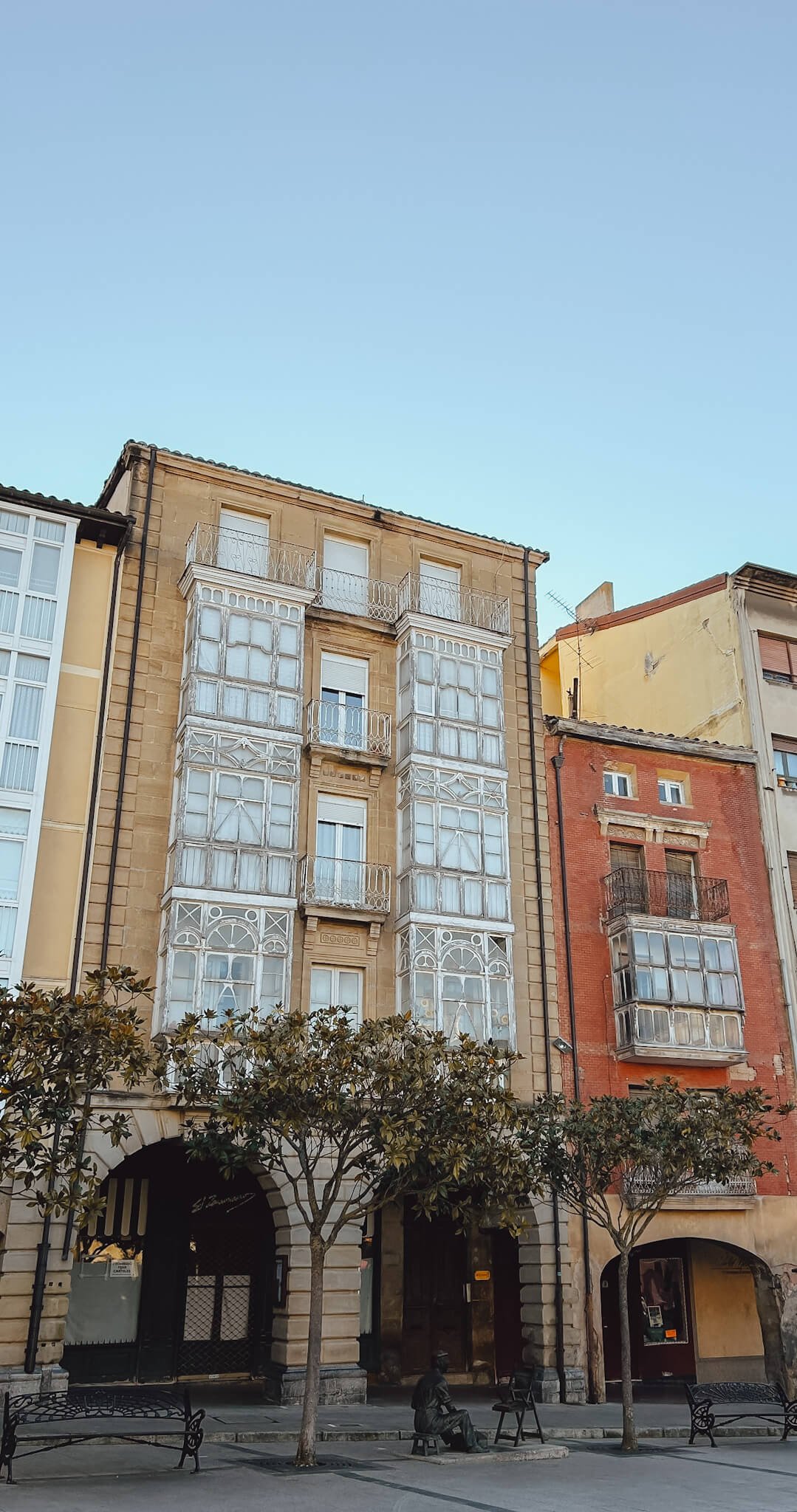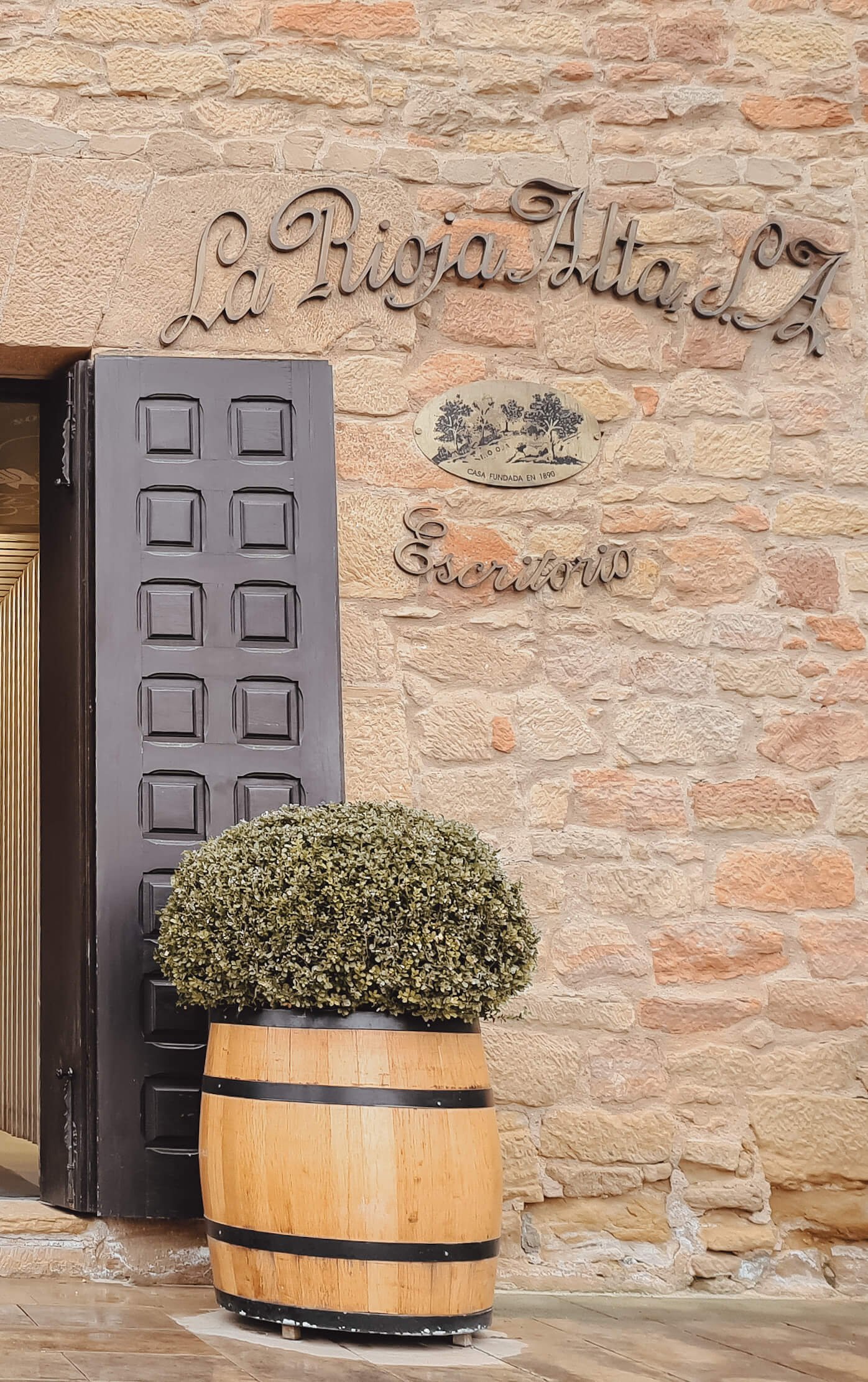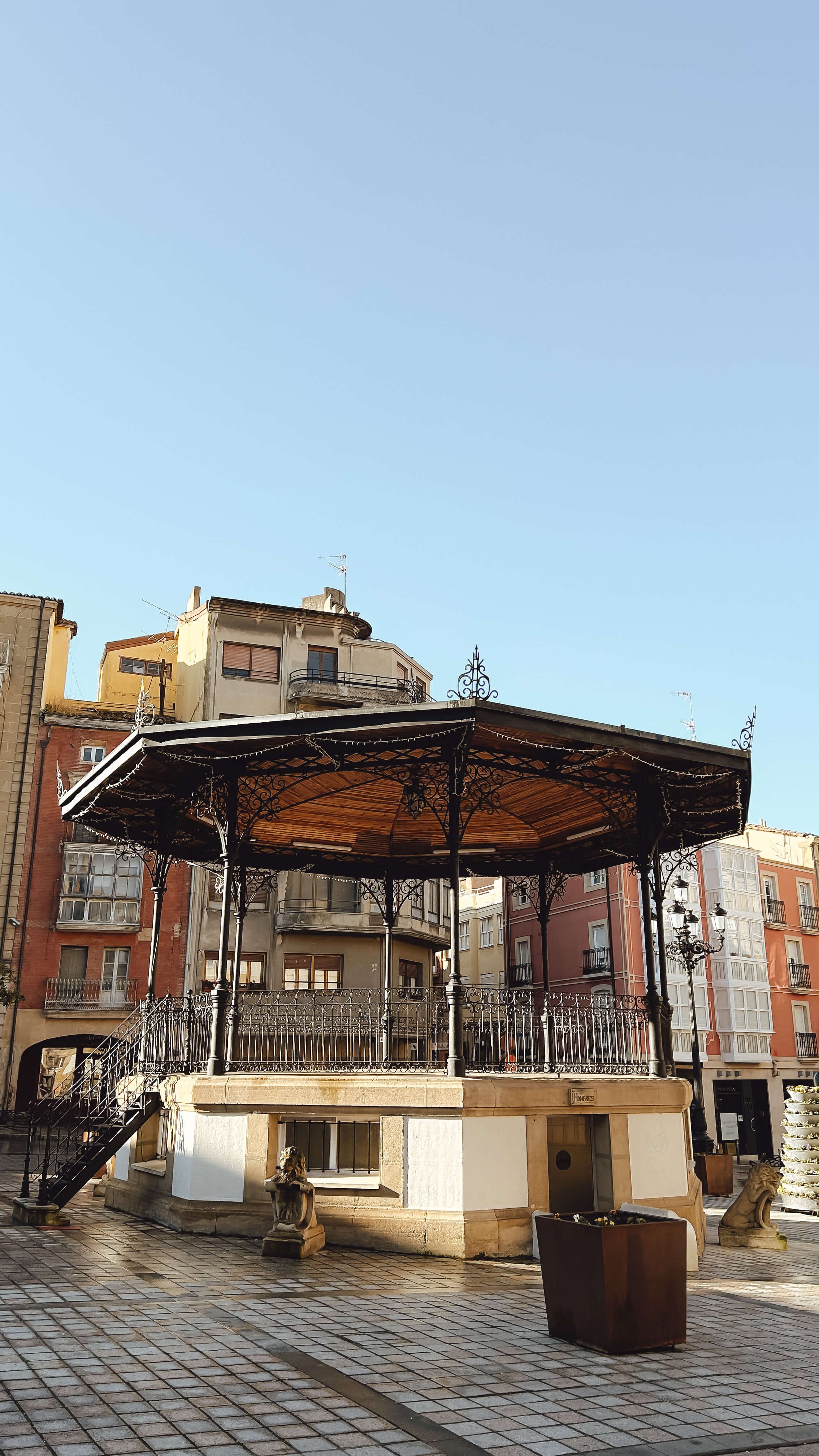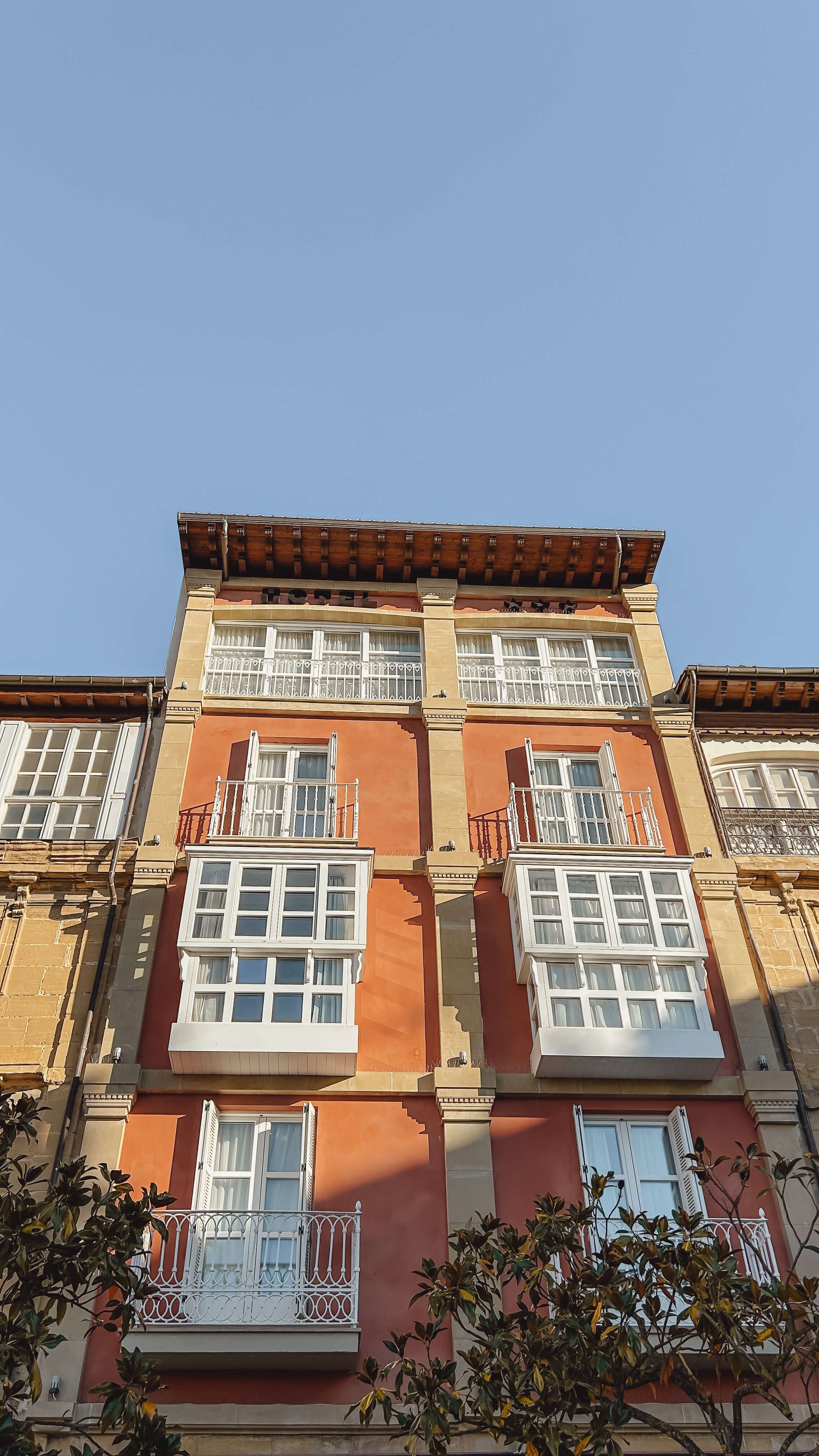A Guide to Haro, Spain | Rioja’s Wine Capital
Looking for things to do in Haro, La Rioja – where to stay, visit, and how to sample the famous wine? Or just trying to figure out if it’s worth visiting on your Spain road trip? Then this short guide to Haro should help.
Far away from the golden beaches of the Atlantic and charming seaside villages, there lies a lush expanse of Spanish countryside known as La Rioja. Best known for its wonderful red wine and abundant with vineyards, all roads in Rioja lead to its wine capital – the unmissable town of Haro, Spain.
Speak to any lover of Spanish wine, and Haro is likely one of the first places they’ll mention.
The town is synonymous with wine bars, bodegas, and vineyards all selling locally produced and world-famous Rioja wine. It is what brings people to Haro in Spain, and the surrounding fields of grape vines are an icon of the region.
For me, Haro is one of my favourite Spanish destinations and I love this Rioja town so much that I’ve visited twice on trips around Spain. It’s also an easy day trip from northern city Bilbao and neighbouring town bustling Logrono.
Here’s my guide on Haro, Spain and how to get the most out of your time in this incredible Spanish town. Including the best things to do in Haro, how to get to Haro, where to stay, and how to plan a Haro Rioja wine tasting.
Contents
Haro Map
Haro highlights & things to do
Rioja tours and tastings in Haro
Best bodegas / wineries in Haro
How to get to Haro, Spain
Best time to visit Haro
Haro Tours From Bilbao
If you’re looking to visit Haro and La Rioja wineries, but don’t want to drive, then I recommend this highly rated Rioja tour.
Leaving from Bilbao, and lasting a full day, you’ll have the opportunity to wander around Haro with an expert guide. Followed by a wine tasting in one of the regions best bodegas. After, discover the medieval and picturesque Rioja towns of Laguardia and Elciego, before returning to Bilbao.
How to get to Haro, SPain
Once you’re in Spain, Haro is easily accessible by either train or car. Here’s how to get to Haro from the UK and northern Spain:
Fly from the UK
The closest international airport to Haro is Bilbao. BA, Vueling, and EasyJet all fly from the UK to Bilbao. From Bilbao airport, either rent a car, take the train, or bus to Haro.
If you’re renting a car, then I recommend booking via Discover Cars who have inexpensive car hire in Spain.
Ferry from the UK
If you’re taking a ferry, safe to say you’re on a much larger UK to Spain road trip. We’ve taken this journey three times now and love the flexibility and freedom it gives. Plus how many amazing Spanish destinations it’s possible to see. There are various ferry companies, but I love comfortable and lux Brittany Ferries. They cross regularly from Portsmouth and Plymouth to Santander and Bilboa. Check out their sailings here.
Haro by car
You can drive to Haro from Bilbao in just over an hour, or from San Sebastian to Haro in around1.5 hours, or from Biarritz in France to Haro in around 2-hours.
It’s likely you’ll be doing a wine tasting, so staying overnight and finding a hotel with parking would be a wise option.
Alternatively, like us, you can visit Haro and Rioja on a larger Spain road trip. We made Haro our first stop in Spain before heading south to Caceres and eventually Andalusia.
Haro by train
One of the easiest ways to reach Haro is by train.
The train station is in the heart of the bodegas and only a 15-minute walk into the town centre. There’s one train a day from Bilbao, which takes around 2-hours. As the train arrives in Haro in the late afternoon, you’ll likely need to stay over. Check the trains here.
Haro by campervan
Whilst the distances are the same as the car route above, campervan travellers will also find an excellent campsite in Haro. A 5-minute walk to the bodegas and 10-minutes into town make this an incredibly handy stopover. Find the campsite here.
Where to stay in Haro, Spain
If you’re staying overnight then it has to be in hotel or apartment near the town centre. Here are my favourite Haro hotels:
Hotels
Hotel Plaza De La Paz | Modern and minimalist, this hotel is situated on the main plaza and has excellent reviews and reasonable prices. Private parking is also available but costs €12. Book it here.
Eurostars Los Agustinos | Originally a 14th-century convent, this beautiful building is a unique stay. Prices are higher than other options, but rooms are spacious, and reviews are good. Be aware parking is offsite and costs €15. Book it here.
Apartments
If you’re staying in Haro for longer, or just want more space and amenities like a fully equipped kitchen, check out these apartments:
Apartamentos Señorio de Haro | Has self-catering facilities in the town centre, with gorgeous rooms that offer a more Spanish experience. Parking is nearby and free. Book it here.
Limehome Haro Calle de la Vega | Rooms in this modern stay are lovely and bright, some with balconies overlooking the main plaza. Parking is free and reviews are excellent. Book it here.
Haro, Spain Map
Download and use this Haro Spain map to find the bodegas, tapas bars, and best things to see in Haro.
Best Things To Do In Haro, Spain
Situated on the banks of the River Ebro, Haro is one of Northern Spain’s more compact towns. And unlike its much larger neighbour wine and tapas town Logrono, Haro can easily be explored in an afternoon.
However, in my experience, be prepared to get lost here for hours!
In the historic centre, a maze of narrow streets leads to hidden plazas and churches, whilst tucked away tapas bars are a wonderful temptation. So too are the traditional wine bars selling of course Rioja, in glasses that appear deceptively small.
Then there’s the beautiful Plaza de la Paz, a thriving spot on a sun-drenched weekend when locals gather for a café, vino, tapas, and lengthy chats.
Whilst nearby the Church of Santo Tomás is a wonderful surprise amongst the winding streets; so too are the indiscernible way markers for the Camino del Ebro which quietly passes through Haro.
Finally, at the bottom of the hill are a handful of impressive bodegas – owned by the vineyards, these wineries offer tours and tastings for true lovers of all-things Rioja.
How To Drink Rioja in Haro, Spain
Undoubtedly, the reason most people visit Haro is to drink Rioja; whether it’s to learn more about the history of the grapes or simply taste their favourite wine in its home region.
That’s why drinking Rioja is one of the best things to do in Haro, Spain.
It was a trip to San Sebastian where I first tasted Rioja wine, though it was years later before I truly appreciated this delicious red. Since then, Rioja has become my wine of choice and subsequently, the town of Haro has become a bucket list place, a pilgrimage almost, that had to be included in our Spain road trip.
If, like me, you also have a favourite tipple (whether its Greek ouzo or Italian limoncello) you’ll understand how much better it tastes under its own sun. And I can confirm, this very much applies to Rioja in Haro.
Haro Wine Drinking Day Tours
From San Sebastian and Bilbao
Below, I’m going to share the best way to visit Haro, Spain, and how to organise a wine flight or winery tour on your own time.
Alternatively, this highly rated winery day tour from San Sebastian and this highly rated winery tour from Bilbao are both wonderful way to experience Haro and Rioja without the stress of transport or hotels.
Lasting around 9-hours, these tour visits wineries, taste premium wines, and include traditional Riojan eateries.
Haro’s wine drinking areas
Once you arrive in Haro, it’s not immediately clear where to head.
However, for wine tasters, Haro is split into two distinct areas and its best to understand these before you arrive. Plus, we realised that the best way to fully experience Haro is to spend a little time in each area.
Haro, Spain’s main wine drinking areas are:
Wine Area 1: THe Historic town centre
Firstly, there’s the historic town centre at the top of the hill. This is where you’ll want to head for a more authentic experience, and you’ll find wine & tapas bars scattered amongst a handful of winding lanes. Once here you’ll also find Plaza de la Paz surrounded by cafes and bars, which is especially lively on a sunny weekend (find it here).
This area is less commercialised, and the bars tend to be more rustic – it’s also where you’re likely to find locals and Spanish travellers spending their time. Plus, if you’re looking for food, Haro’s town centre is your best option with highly rated tapas bars and restaurants.
However, one thing you won’t necessarily find in Haro’s town centre bars is an extensive wine list.
Many of the bars only offer one type of Rioja (occasionally there’s also a fancier reserva option) served in a small glass with a generous measure. This isn’t always the case, but if you’re looking to DIY a wine flight in town then you’ll want to scope out what’s on offer behind the bar before ordering.
In terms of cost, expect to pay as little as €2.50 per glass.
The best plan in Haro centre is to have no plan; simply wander till you find a bar or café amongst the streets or very pretty plaza. However, a few excellent bars to visit are:
Harmony (here on Google Maps)
El Sol (here on Google Maps)
Folk Tavern (here on Google Maps)
Teorema Pub (here on Google Maps)
Tip: when in Haro town centre, you’ll want to know a few basic Spanish words. For example: two glasses of red wine, the bill please, and the basic please & thank you will help you order.
Wine Area 2 - The Station District
Alternatively, there’s the Station District. Located a short 15-minute walk from Haro’s historic centre, this area is home to some of Rioja’s biggest wineries. These wine houses are known as ‘bodegas’, and offer bookable tours, formal tastings, and in-house chic bars.
At the bottom of the hill, the Station District contains around 10 bodegas all within easy walking distance of each other.
It is touristy, and is purpose built for visitors, however it is also an excellent way of sampling Rioja. Plus, seven of the bodegas here are considered the best of all the Rioja wineries, from a staggering list of nearly 600.
Bodega Wine Tasting Tours
Each of the bodegas offer tours (usually an English tour in the morning and Spanish tour in the afternoon), and these need to be booked online in advance. As well as finding out about the history and production, these usually include a wine tasting. Expect to pay upwards of €45 per person for a tour plus tasting.
However, I personally found the best way to visit the bodegas was to visit their bars.
Here you can choose individual glasses of wine from their menu and create your own wine tasting. This is less formal than a tour, less expensive, no need to book, and a lovely way to try different wines. Whilst it is less authentically Spanish, so long as you set your expectations you’ll have a very enjoyable time in the bodegas.
Once here, I found wine by the glass in bodegas to be very reasonable though more expensive than town – expect to pay from around €5 a glass, more if you’re looking for something fancier.
Best Haro bodegas
As mentioned above you can simply pop into any bodega wine bar.
Alternatively, if you’re keen to know more about wine culture or the history of Rioja in particular, I’d recommend booking a bodega tour – this 2-hour tour in English is one of the best and includes four wines to taste.
Other bodegas with excellent reviews, tours, and bars are:
Bodegas La Rioja Alta | we visited the Rioja Alta bar and chose our own individual glasses of their Rioja to try. The bar itself is lovely, the staff friendly, and there’s a small outdoor seating area. Would highly recommend. Find it here.
Bodegas Roda | reviews for wine tours are excellent and the bar is open to the public, serving up glasses or wine flights with views overlooking the river. Find it here.
Bodegas Muga | offers standard winery tours and also segway tours of the vineyard. The onsite wine bar is open to the public and has outdoor seating for sunny days, serving individual glasses or wine flights. Find it here.
Bodega Tips
For those of you who aren’t comfortable with Spanish, the bodegas tend to have English speaking staff on hand to help you order.
Also, at the weekend, you will find the bodegas far busier than on a weekday. After seeing a tour bus arrive at an already packed courtyard, we avoided a Saturday and chose a Tuesday afternoon instead; we almost had the bar to ourselves.
When is best to visit Haro, Spain
The best time to visit Haro, Spain is between April and October, when the bars and bodegas are open longer and the weather is likely to be at its sunny best. However, we visited in February and were blessed with lovely sunny days and no crowds.
Haro also has a number of festivals in summer, including the infamous La Batalla del Vino, or Wine Battle. Each June, people flock to Haro for this annual wine festival, where the locals drench each other in wine before partying in the plaza.
You can find out more about Haro’s summer festivals here.
Is Haro, Spain worth visiting?
In a word, yes. Haro is a wonderful town and very much worth visiting - for it’s wineries, stunning architecture, and beautiful countryside.
Though in all honesty, only for a 1 or 2-night stay.
As you’ve probably already realised, if you don’t like vinos tintos, then a trip to Haro is probably not for you. In fact, non-wine drinkers would likely be happier visiting one of Spain’s other historic towns or cute seaside villages, of which there are many to choose from.
In all honesty, even I was content to get back on the road and visit some other beautiful places, particularly lesser-known ones that delivered gorgeous architecture like Caceres and Zaragoza.
That’s not to say I didn’t enjoy Haro, Rioja; I very much did. It’s simply to manage your expectations of how much time you’ll need to visit.
My advice to you is to visit Haro on a trip from Bilboa or Zaragoza, or an overnight stop on a much larger Spain road trip.

